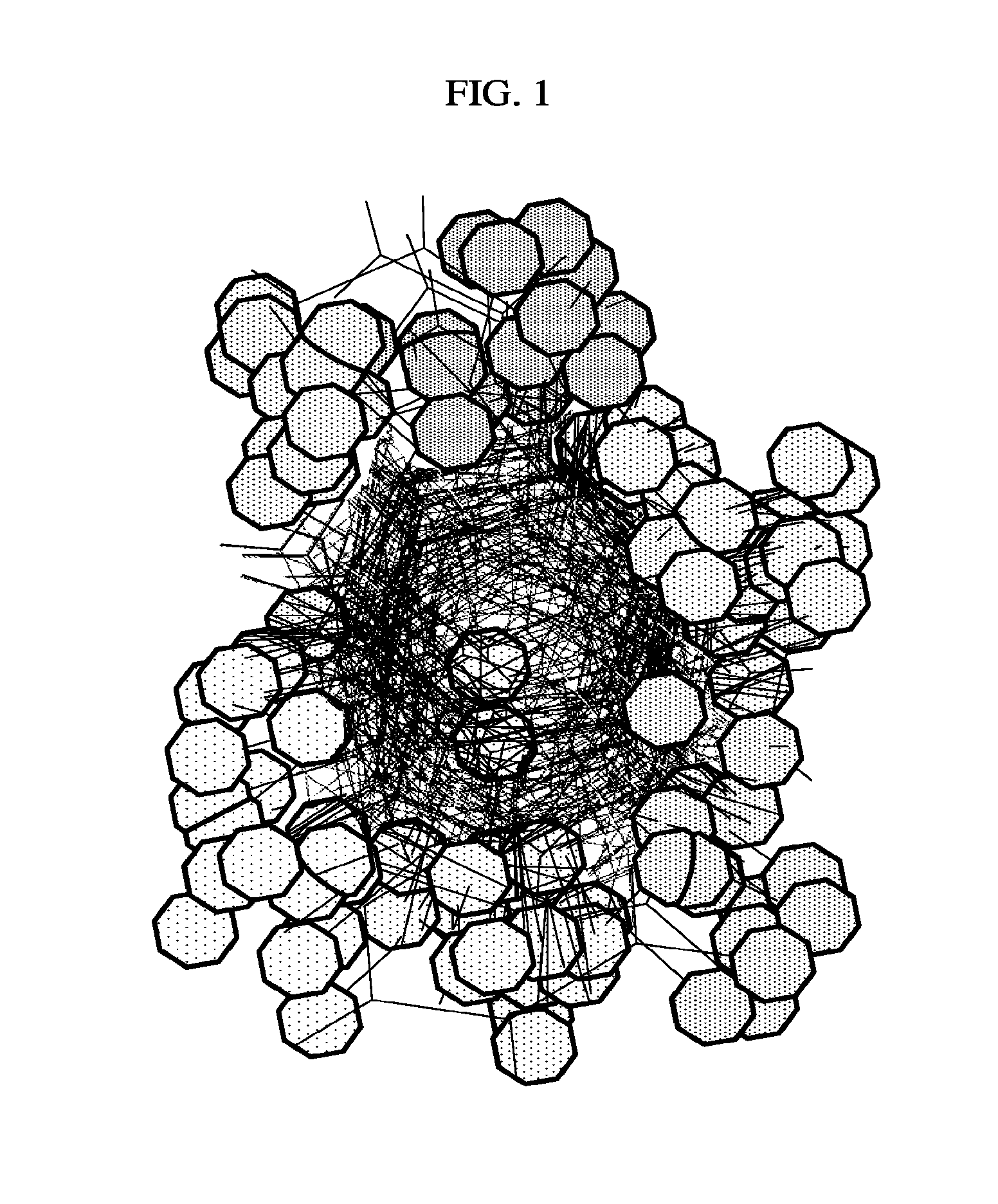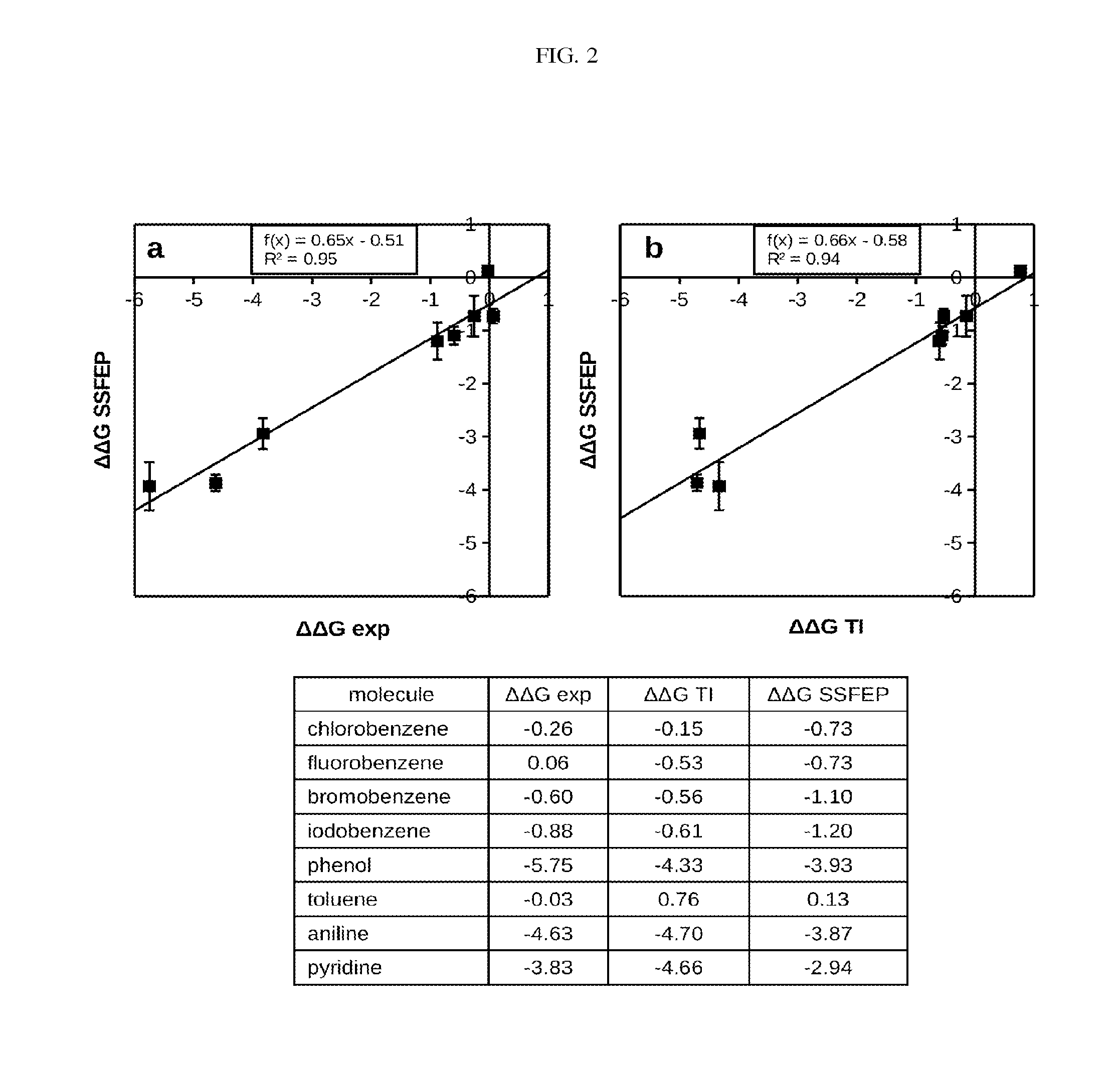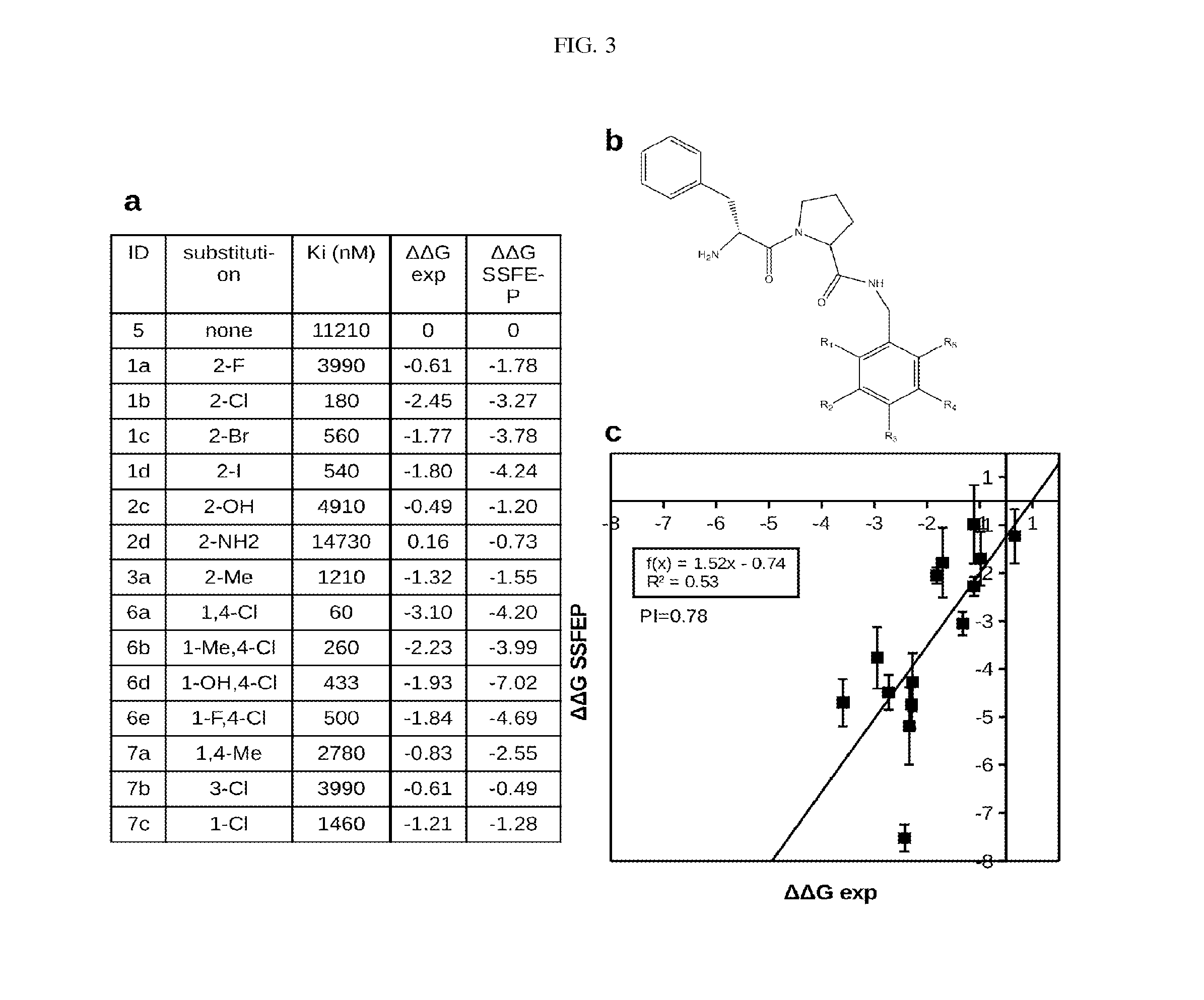Site-specific fragment identification guided by single-step free energy perturbation calculations
a free energy perturbation and fragment identification technology, applied in the field of compound screening, can solve the problems of limited number of ligand types that can be included in the md simulation, information that is difficult to obtain, and significant limitations
- Summary
- Abstract
- Description
- Claims
- Application Information
AI Technical Summary
Problems solved by technology
Method used
Image
Examples
examples
[0093]A further understanding can be obtained by reference to certain specific examples, which are provided herein for purposes of illustration only and are not intended to be limiting unless otherwise specified.
[0094]Methods
[0095]MD Simulations
[0096]In the examples described, all simulations were performed using the CHARMM molecular simulation program, the CHARMM protein force field with CMAP (“Correction Map”) backbone correction, and the TIP3P water model. The CHARMM general force field (CGenFF) version 2b5 was used for all ligands. The CGenFF program version 0.9.1 beta (accessible through the ParamChem interface) was used to obtain the topology, charges and initial guess parameters for the two parent inhibitors of thrombin and P38MK containing the unsubstituted phenyl group. These initial parameters were further optimized and validated per the CGenFF procedure which uses quantum mechanical (“QM”) energies and geometries as target data. For simulations involving proteins, any cry...
PUM
 Login to View More
Login to View More Abstract
Description
Claims
Application Information
 Login to View More
Login to View More - R&D
- Intellectual Property
- Life Sciences
- Materials
- Tech Scout
- Unparalleled Data Quality
- Higher Quality Content
- 60% Fewer Hallucinations
Browse by: Latest US Patents, China's latest patents, Technical Efficacy Thesaurus, Application Domain, Technology Topic, Popular Technical Reports.
© 2025 PatSnap. All rights reserved.Legal|Privacy policy|Modern Slavery Act Transparency Statement|Sitemap|About US| Contact US: help@patsnap.com



